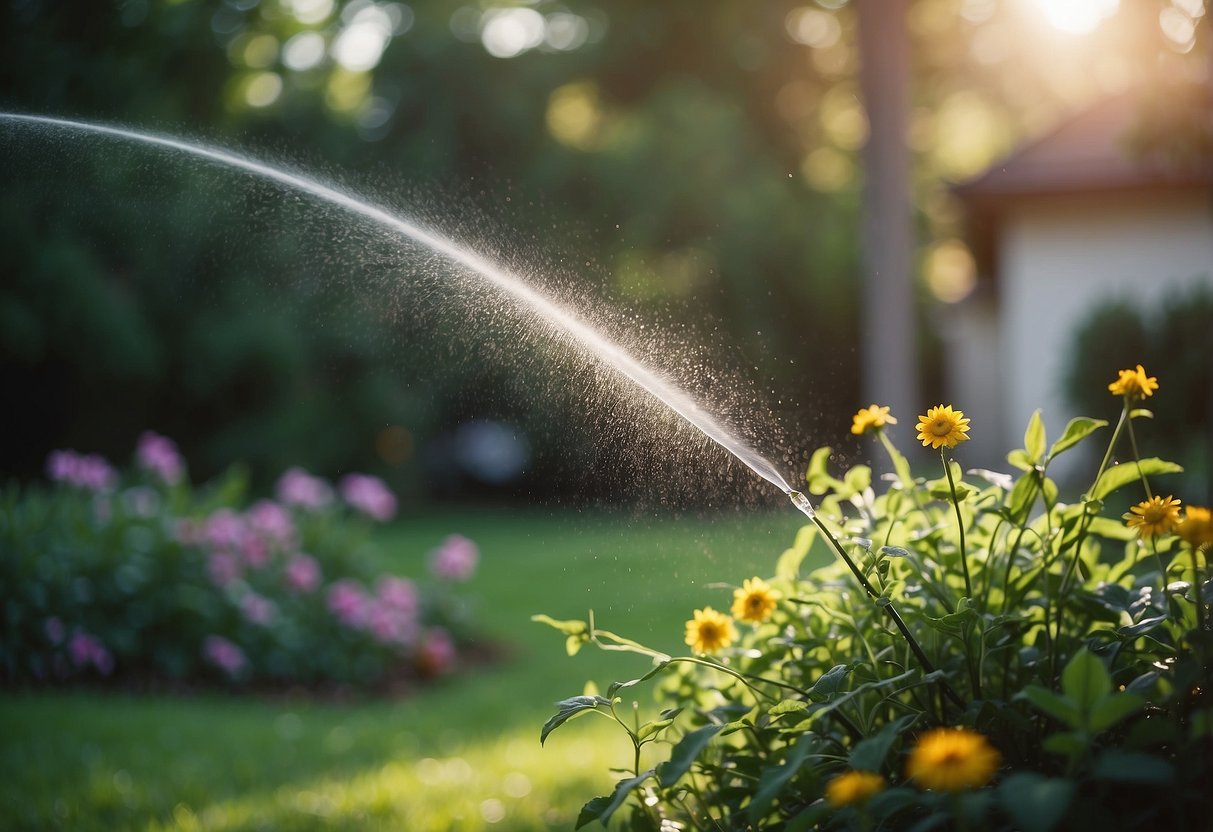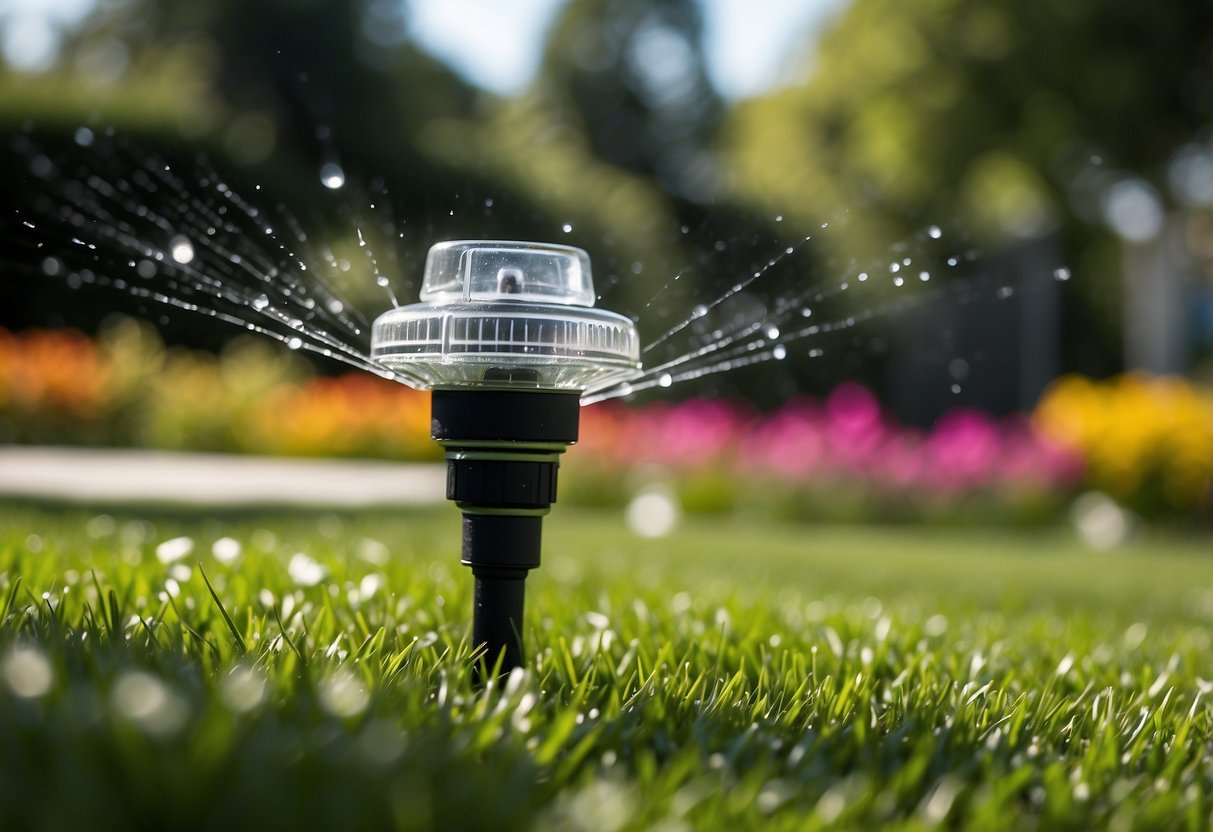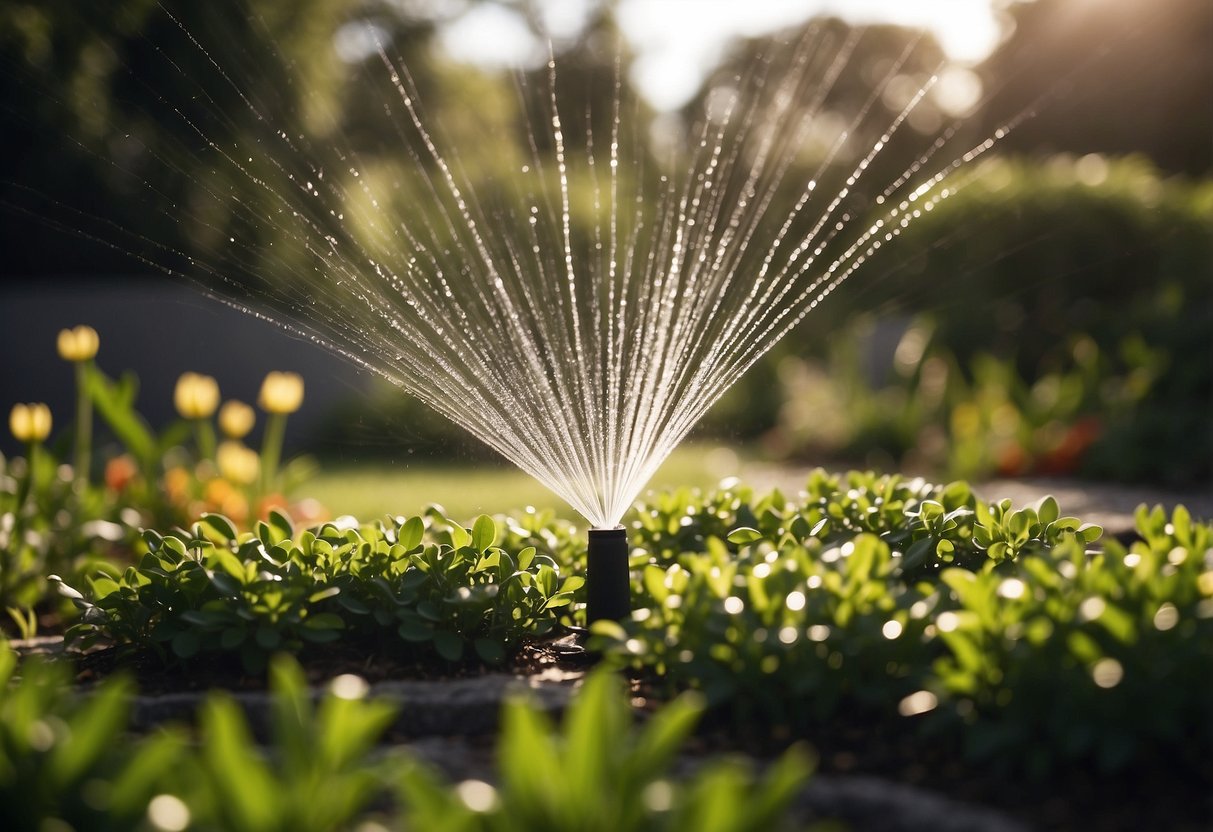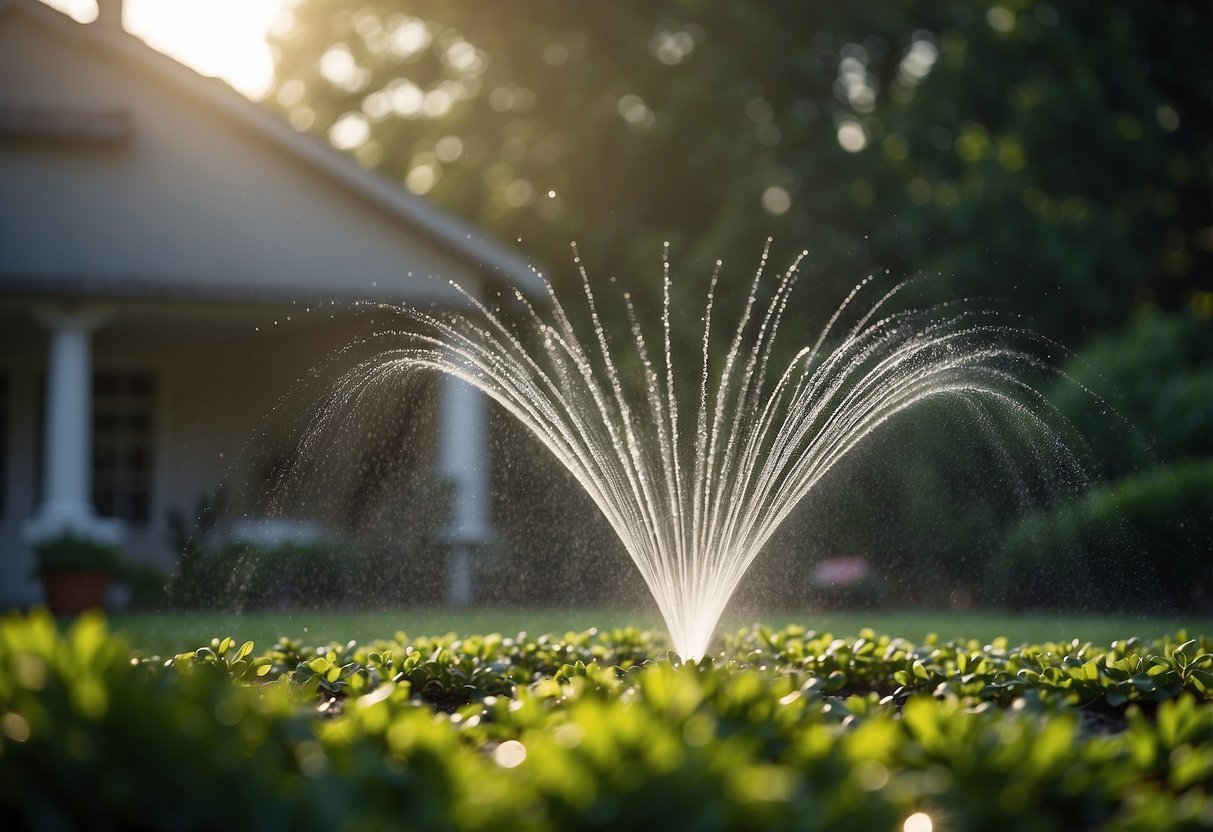Garden Sprinkler System Ideas: Easy Ways to Keep Your Plants Happy
Looking for ways to keep your garden lush and green? You’ve come to the right place. A good sprinkler system can make watering your plants much easier and more efficient, saving you both time and effort.

What are some simple and budget-friendly ways to set up a garden sprinkler system? Whether you’re a seasoned gardener or just starting out, there are plenty of DIY projects that can fit your needs and budget. Explore different ideas to find what works best for you and take the first step towards a healthier garden.
1) Adjustable Spray Heads

Adjustable spray heads are great for customizing your garden’s watering needs. They let you change the direction, distance, and pattern of the spray.
Many adjustable heads allow you to tweak the spray from a full circle to a partial arc.
By turning a screw on the nozzle, you can control how far the water sprays. This gives you flexibility in your watering setup.
They are simple to adjust. Use a screwdriver to turn the screw on top of the nozzle clockwise to increase the distance, or counterclockwise to reduce it.
2) Drip Irrigation Lines

Drip irrigation lines are a great way to water your garden without much effort. These lines deliver water directly to the roots of your plants, which helps save water and keeps the soil evenly moist.
You can easily set up your own drip irrigation system. One simple method involves using milk jugs with holes to slowly drip water.
For a more advanced option, install pressure-compensating drippers onto tubing. This ensures each plant gets the same amount of water, regardless of its position in your garden.
3) Oscillating Sprinkler

Oscillating sprinklers are a great choice for watering rectangular lawns. They move back and forth, spraying water evenly across your yard. This ensures every inch receives enough moisture.
These sprinklers come in various sizes. Some, like the Orbit Pro Series, can cover up to 4,000 square feet. Others, like the Aqua Joe, are perfect for even larger areas.
With easy-to-adjust settings, you can control the spray’s width, height, and flow. This makes it simple to customize your watering needs.
4) Pulsating Sprinkler

Pulsating sprinklers are great for watering large areas. They work by shooting out strong jets of water, which helps to cover more ground.
You can use them for gardens or even sporting fields. One top choice for high water pressure is the STYDDI Pulsating Impact Sprinkler. It can handle up to 80 PSI and is made of durable zinc alloy.
These sprinklers are also easy to move around. If you need a portable option, the Orbit 56186N Brass Impact Sprinkler on Wheeled Base is a good pick.
5) Smart Wi-Fi Sprinklers

Smart Wi-Fi sprinklers make it easy to water your garden. You can control them using your smartphone, even if you’re not at home.
Some models, like the Rachio 3, offer weather-based scheduling. This feature helps you save water by adjusting watering times based on local forecasts.
The Orbit B-hyve XR is another popular choice. It has intuitive controls and works well for both indoor and outdoor setups.
6) Soaker Hoses

Soaker hoses are a great way to water your garden efficiently. They slowly release water directly to the roots, minimizing evaporation.
To set up, lay the hose throughout your garden, making sure it touches the base of your plants.
Connect the soaker hose to your water source and turn it on gently to avoid high water pressure, which can damage the hose.
For best results, run your soaker hose for about 1-2 inches of water per week, depending on the weather.
Keep in mind that in hotter months, you may need to water more frequently.
Learn more on setting up a soaker hose system.
7) Underground Sprinkler Systems

Underground sprinkler systems are perfect for keeping your garden lush without much effort. These systems deliver water directly to your plants’ roots, ensuring they get the hydration they need.
Installation might seem challenging, but it’s manageable with the right tools and a bit of patience. You’ll need to bury pipes and place sprinkler heads throughout your lawn.
An underground system can be quite efficient and is often recommended for larger gardens. It also keeps your yard neat since all the components are hidden underground. Learn how to install an underground sprinkler system.
8) Automatic Timer Systems

Automatic timer systems make watering your garden a breeze. These smart devices let you schedule when and how long your sprinklers run. You can set them up to water at the best times of day, which helps save water and keeps your plants healthy.
Many models, like the Orbit B-Hyve 57950, offer easy-to-use interfaces. Some even let you control them through apps on your smartphone.
With options for different garden sizes and budgets, automatic timers are a great investment for hassle-free garden care.
9) Pop-Up Sprinkler Heads

Pop-up sprinkler heads are perfect for keeping your lawn lush and green. When activated, water flows through the underground pipes to the pop-up heads. The water pressure makes the sprinkler riser extend upward out of the ground.
You can choose from different types like rotary sprinklers to cover various yard sizes. Some heads even have adjustable nozzles, making it easy to target specific areas. Install pop-up heads in your garden for hassle-free irrigation.
10) High-Pressure Sprinklers

High-pressure sprinklers are perfect for large lawns and gardens. They use strong water pressure to cover wider areas quickly and efficiently. These sprinklers need a minimum water pressure of about 30 psi to work effectively.
Using impact sprinklers can help you achieve even coverage for bigger spaces. These are great for long distances and ensure your lawn gets the water it needs. High-pressure sprinklers can handle tougher watering tasks compared to regular models.
Types of Garden Sprinkler Systems

There are several types of garden sprinkler systems, each designed to meet different needs. You’ll find options ranging from simple hose-end setups to more complex in-ground systems, all offering unique benefits.
Above-Ground Sprinklers
Above-ground sprinklers are easy to set up and move around. A popular type is the rotary sprinkler, which spins in circles and can cover medium to large areas. For smaller spaces, a stationary sprinkler might be more suitable, delivering water in a fixed pattern.
You can also find oscillating sprinklers, which move back and forth, providing a rectangular coverage area. These are great for even water distribution on lawns.
- Benefits: Simple setup, portable, adjustable coverage.
- Drawbacks: May need frequent repositioning, can be less durable.
In-Ground Sprinklers
In-ground sprinklers are more permanent and are usually installed in buried pipes. The pop-up sprinkler is a common choice. These heads rise from the ground when in use and retract when off, keeping your lawn clear.
In-ground systems can be customized for your garden’s shape and size, ensuring efficient water use. These systems generally cover larger areas better than above-ground options.
- Benefits: Less visible, customizable, efficient.
- Drawbacks: Higher installation cost, requires professional setup.
Drip Irrigation Systems
Drip irrigation systems deliver water directly to the plant roots. This method uses soaker hoses or drip lines to slowly release water, minimizing waste. They’re perfect for garden beds, potted plants, and shrubs.
A major advantage is the precision; you can water the exact plants that need it, conserving water and reducing the risk of overwatering. This system can be set up with timers for convenience.
- Benefits: Water-efficient, precise, reduces weed growth.
- Drawbacks: Can clog, requires maintenance, initial setup can be detailed.
By choosing the right type of system for your lawn and garden, you can ensure your plants get the right amount of water without wasting resources.
Designing an Efficient Sprinkler System

Designing a sprinkler system involves ensuring full water coverage and choosing the right sprinkler heads for your garden. It requires planning in detail to avoid gaps in water distribution and selecting components that match your lawn’s needs. This guide will help you create an efficient and cost-effective system.
Planning for Water Coverage
Before installing sprinklers, measure the size and shape of your garden. Knowing the dimensions helps in placing sprinklers accurately for complete coverage. Draw a rough sketch of your garden, marking areas where plants, trees, and grass are located.
Evaluate water pressure and flow rate. High pressure can damage sprinkler heads, while low pressure might lead to poor coverage. Test your system’s water pressure and adjust it if necessary using pressure regulators.
Divide your garden into zones based on water needs. Lawn areas typically need more water than flower beds or shrubs. In each zone, plan the placement of sprinklers to ensure overlapping coverage. This overlap helps eliminate dry spots and ensures even watering.
Choosing Sprinkler Heads
Sprinkler heads come in different types, each suited for specific areas of your garden. Rotary heads are ideal for large lawns, as they cover wide areas with adjustable spray patterns. For smaller sections like flower beds, fixed spray heads with a consistent pattern work best.
Match sprinkler heads to your garden’s plant needs. Lawns benefit from rotary or impact sprinklers, while shrubs and flower beds might need micro-sprayers or bubblers. Look for adjustable heads that allow you to change the water flow and spray radius.
Consider water efficiency when selecting heads. Opt for low-water-use models that reduce waste and save on water bills. Additionally, ensure your chosen sprinkler heads are compatible with your water pressure to avoid performance issues. For more on this, visit Rain Bird.
Maintenance Tips for Your Garden Sprinkler System

Keeping your garden sprinkler system in top shape involves regular inspections and preparing it properly for winter. These tasks help ensure your system lasts longer and works efficiently throughout the year.
Regular Inspections
Inspect your sprinkler system at least once a month to spot any issues early. Start by checking each sprinkler head. Look for clogs or dirt buildup that can block water flow. Clean any debris using a small brush or running water.
Next, test your system to make sure each head sprays evenly. Uneven spray patterns can mean a clogged nozzle or a damaged head. Replace broken heads promptly to avoid dry spots in your garden.
Check for leaks in the pipes and fittings. Even small leaks can waste water and reduce efficiency. Tighten loose connections and replace any damaged parts. Adjust the spray direction to ensure water is reaching the plants and not wasted on sidewalks or driveways.
Winterizing Your System
Winterizing your garden sprinkler system is crucial if you live in an area that experiences freezing temperatures. First, turn off the water supply to prevent any water from entering the system during winter.
Then, drain the water from the system. You can do this by using the system’s drain valves or by blowing out the water with compressed air. Make sure all water is removed to prevent pipes from freezing and cracking.
Remove and store all sprinkler heads indoors to protect them from freezing temperatures. Insulate any above-ground pipes with foam insulation to add an extra layer of protection.
Lastly, cover the main shut-off valve with insulation to prevent it from freezing. Following these steps will help ensure that your sprinkler system is ready to go when the warmer weather returns.







